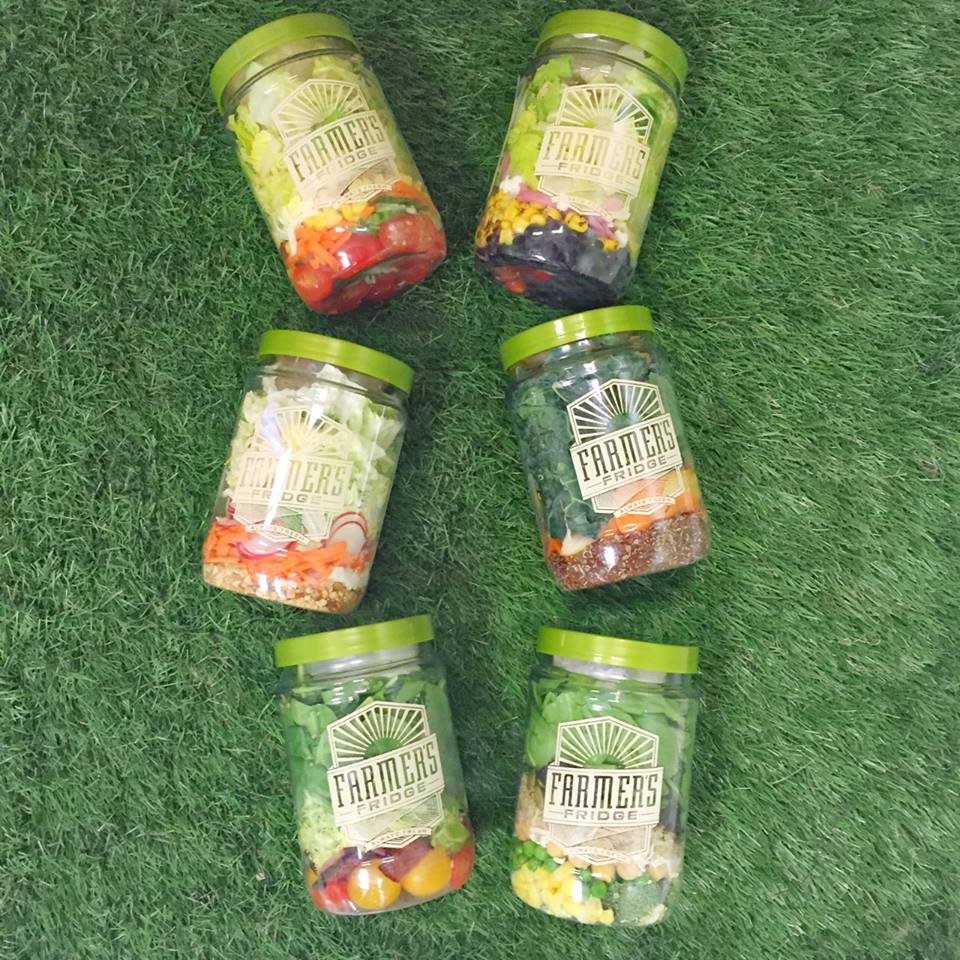https://www.instagram.com/p/BFzmy72PC0r/
Farmer’s Fridge is changing the vending machine game. Since 2013, they’ve installed 40 fresh-food vending machines throughout Chicago that serve everything from salads and yogurt parfaits to curried chicken salad and salmon niçoise salads.
You won’t find their products in New York just yet, but this weekend only, you can try Farmer’s Fridge at the Waterfront in Chelsea at Food Loves Tech—tickets and more info here. We caught up with the founder Luke Saunders to learn more about the concept, logistics and how he hopes the business will grow in the very near future.
Edible Manhattan: How did a career in industrial machinery inspire you to create vending machines for fresh, perishable foods?
Luke Saunders: Even though I was working on the business side of things, I was involved in overhauling production lines by changing the way machines made our products. Right after college, I worked with a company that made an industrial grease lubricant and we tried to figure out a more efficient way to make the product (we eventually wound up hacking an industrial cookie dough machine). After that, I began working in sales with a metal finishing company and traveled a lot. It also gave me the opportunity to work closely with several engineers.
Because I was traveling so much, I frequently ate [processed foods] from vending machines or rest stops and my diet suffered. I realized that the knowledge I picked up while working with these engineers could be applied to changing the way we get healthy food. I knew I’d need a refrigerated box and a specific look and feel that made for an engaging experience.
EM: That’s a pretty huge leap from hacking grease lubricant to essentially creating a refrigerated vending machine for salads. How do you position yourselves against the rising number of health-focused fast-casual restaurants?
LS: I’ve really come to loathe the word “vending machine.” We’re building a QSR (quick service restaurant) experience. We want to do what it takes to make sure consumers enjoy our products. With restaurants, you want to use people, service and [restaurant] design to create that. For us, we only have 15 square feet and no human interaction, so we need to maximize that space. We took on the challenge of incorporating reclaimed wood, which isn’t a simple integration. Our team also takes great care in merchandising our machines and designing how they dispense products. Using our machines is a fun experience, and we believe these extra touches show that we’re going the extra mile.
We also have the luxury, unlike restaurants, of making fresh, healthy food accessible anywhere. We’re not limited by high rents or costs of operation in the same way other food businesses are. We can work within a gas station, convenience store, food court, bus station, office building, etcetera.
https://www.instagram.com/p/9HLkv8PC1W/
EM: When you install a kiosk in a space, is your team still the one operating it?
LS: Totally. We do everything. We build our own software, make all of the food in a central location, design and construct the final assembly of each machine and manage all customer service. We know it’ll be a better experience for our customers if we’re the ones managing it.
EM: Do the menus vary from fridge to fridge?
LS: The menu definitely fluctuates based on location. If we are in a convenience store (where the price point needs to be lower), the menu reflects that. We have a spectrum of menu options and some locations skew toward particular tastes and price. We’re constantly researching taste and value preferences of our customers. Right now, our prices run from $5 to $12.
https://www.instagram.com/p/_msZ2tPC0y/
EM: In terms of meeting customers where they’re at, do you see Farmer’s Fridges as a player in Chicago’s underserved neighborhoods?
LS: My hope was definitely to be working within these areas. However, our business is run based on the economics of its locations, so we’ve started in more dense and profitable areas and are working from there. Right now, our team is testing and studying the market in underserved neighborhoods because the logistics are different in the neighborhoods where we got our start.
Generally speaking, picking locations has been interesting. I thought I would be approaching people and businesses with underutilized space to create a new revenue stream, but the reality is that people were OK with empty space. So, we have to do a lot of educating and build credibility as a brand and operators.
EM: Will we see more Farmer’s Fridges in other areas?
LS: We’re always working on expansion, so that’s definitely the goal. We’re looking to address the healthy-food-scarcity problem on a massive level. For now, we’re mostly focused on making our operations in Chicago perfect before we take the next step.



